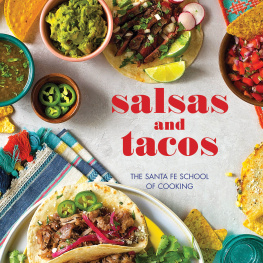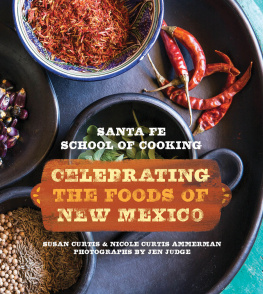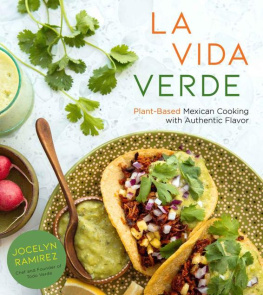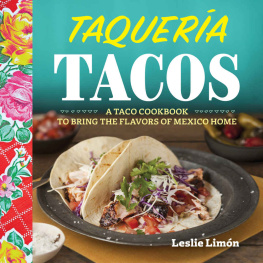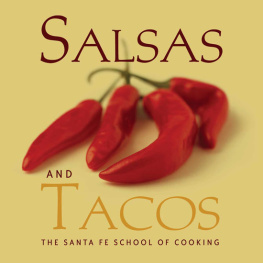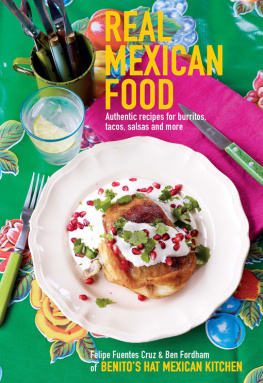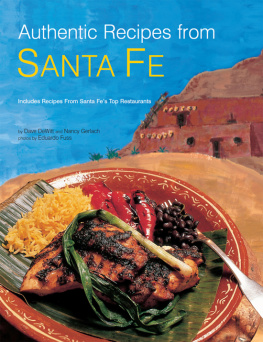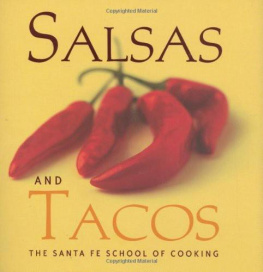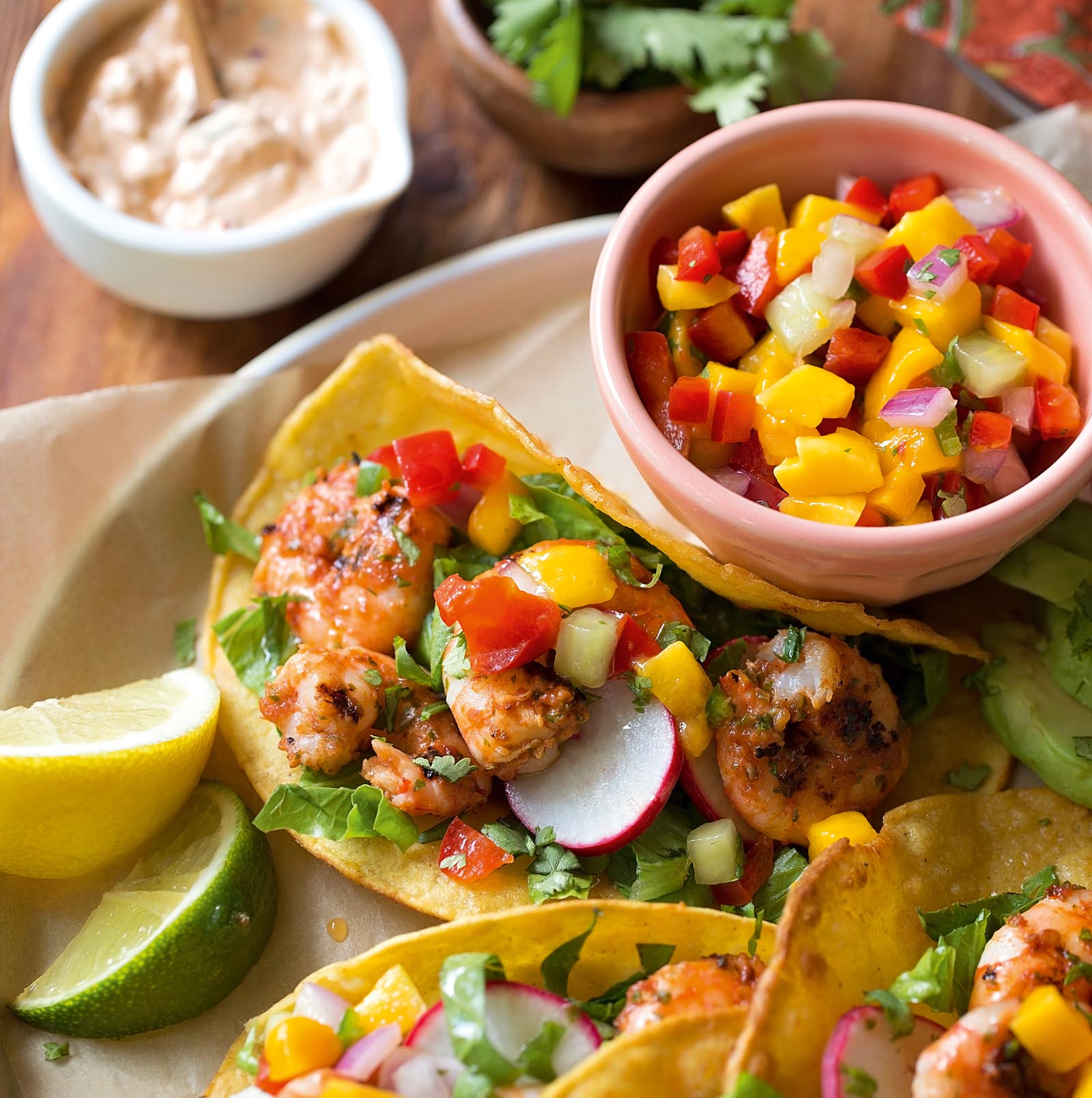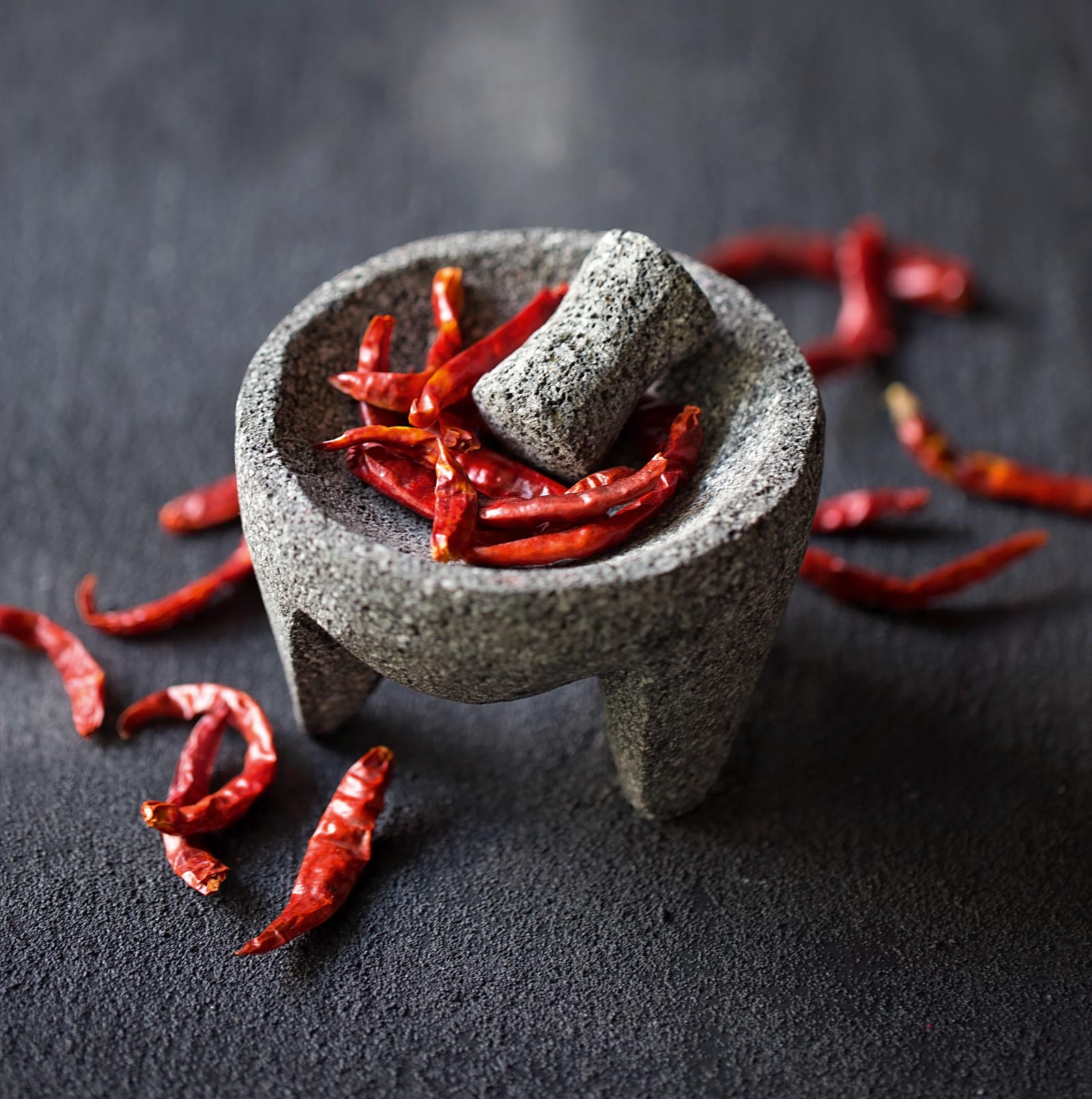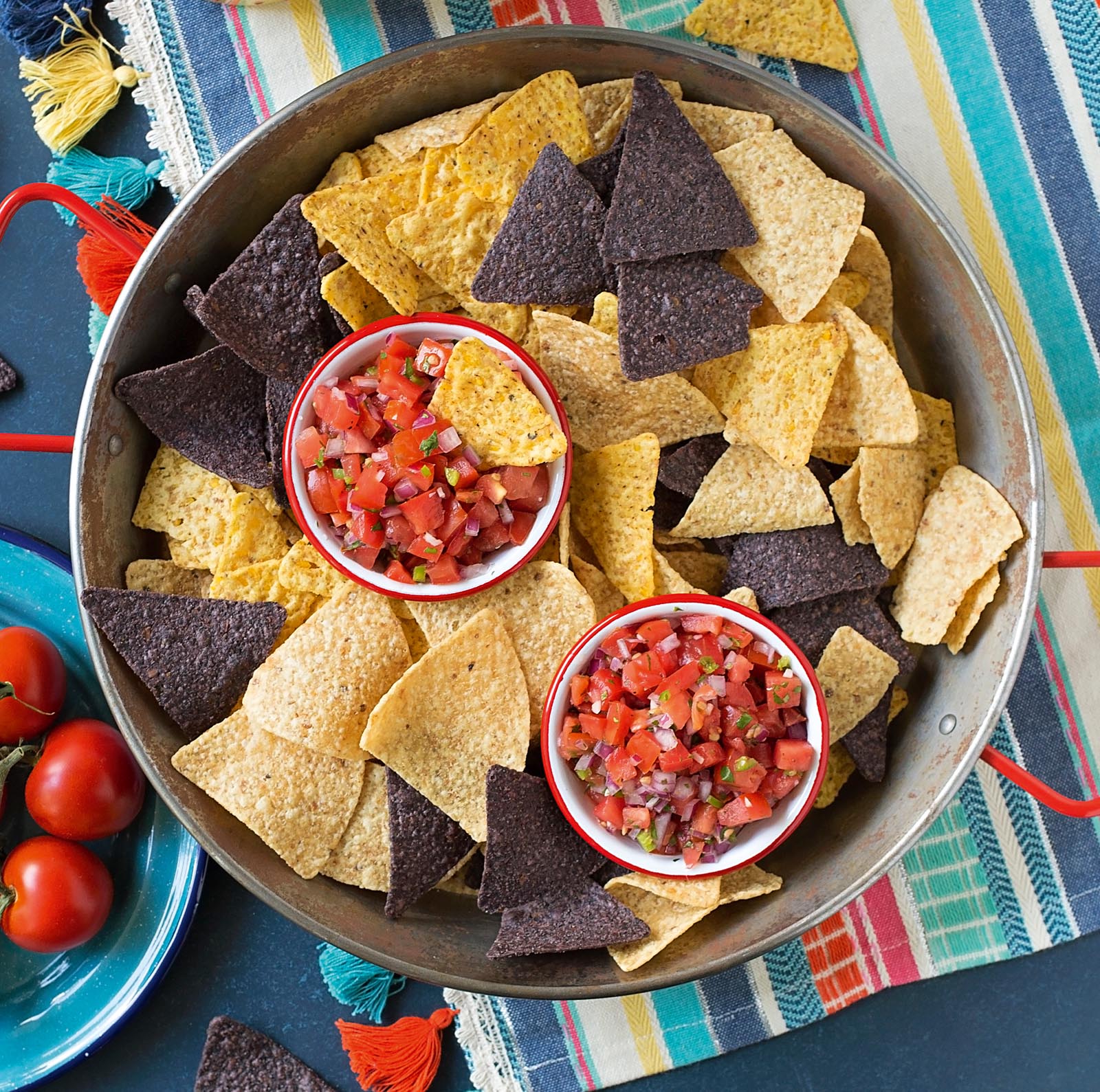Spicy Salsas for Toppings and Dips
Its an unwritten rule that anytime you serve tacos, you must also serve salsa. One spectacular salsa or many varied salsas, the number doesnt matteronly the taste.
Top chefs from The Santa Fe School of Cooking have filled this book with the tastiest recipes taken from a popular little book titled Salsas and another tiny book titled Tacos. Here the best and boldest recipes come together to offer the most satisfying combinations of genuine Southwestern cooking. We have included full-colored photographs, step-by-step instructions, resources for ingredients, and cooking techniques and equipment that you will need to prepare your very own flavorful, unforgettable fiesta.
Its an unwritten rule that anytime you serve tacos, you must also serve salsa. One spectacular salsa or many varied salsas, the number doesnt matteronly the taste. Salsa, the Spanish word for sauce, can be fresh (raw) or cooked, thick or thin, chunky or smooth, crunchy, hot, spicy, mild, sweet, savory, tart, etc. Salsas can be used as a side dish, condiment or relish, as an ingredient in other dishes, or even with a dessert. They can be made from vegetables, fruits, or a combination of both, and are usually served at room temperature but are sometimes chilled.
Many salsas have chiles in them. The recipes are rated: mild (suave), medium (picante), and hot (muy picante). Add chile according to your taste and to suit your guests. Its best to offer mild and hot so everyone has a choice. Remember, the heat of each kind of chile may vary, so take a small taste before adding. For example, fresh jalapeos are generally considered hot, however, in some instances, they can be quite mild. Thus, adapt the recipe to the heat of the chiles you use. If you dont want heat, omit the chiles.
Testing the recipes for this book was a catalyst for many festive parties. Whereas wine-tasting parties tend to be on the stuffy side, salsa and taco tasting fiestas bring out the revelry in guests. From Santa Fes charming adobes to rooftops in the nations capitol, parties have been hosted so guests could sample, critique, and enjoy the recipes in this book. Try it yourself. Mix up some margaritas, make some tacos, grill some meat, and supply a lot of chips to go with these salsasnow youre on your way to a spirited party.
Ingredients for Salsas
Avocado Oval-shaped fruit with a greenish, buttery-tasting flesh. The Hass avocado, with its bumpy brownish-black skin, is the preferred variety for taste. To ripen, leave at room temperature for a day or two, or place in a paper bag to hasten.
Chicos Corn that has been partially shucked, roasted on the cob, dried, and removed from the cob. The result is a chewy but flavorful kernel requiring a long cooking time.
Cilantro Fresh plant from the coriander seed; however, it is not interchangeable with the seed. It is a delicate, aromatic herb of the parsley family. To store, recut the stem ends and place in shallow water. Cover with a plastic bag and store in the refrigerator. Readily available in most grocery stores.
Epazote A pungent herb that grows wild in Mexico and the United States. It is used frequently in seasoning beans and also acts as an anti-flatulent for beans.
Huitlacoche, or cuitlacoche A silvery-gray to black fungus, commonly known as corn smut in the United States, that is cultivated in the kernels of corn. The puffy kernels, or lobes, can be detached from the ears and kept refrigerated for several days. It is usually found frozen or canned and is considered a delicacy in Mexico.
Jicama A tan-skinned tuber. The flavor of the crisp white flesh is compared to that of a water chestnut or a sweet radish. Primarily used uncooked.
Mexican Oregano A weedy-flavored herb reminiscent of, but distinctly different from, the more common Mediterranean oregano. It is used in the dry whole-leaf form versus the ground form.
Mexican Vanilla Bean The pod of a tropical orchid vine. It is native to the New World, dating back to the Aztec culture.
New Mexican or Southwestern Pion Nuts Similar to imported pine nuts but much richer in flavor and oil. They should be stored in the freezer to preserve freshness. They have become very difficult to find since a bark beetle infestation in the late 1990s.
Nopales Cactus paddles or the paddle-shaped stems from several varieties of the prickly pear cactus plants. The flavor is somewhat similar to a green bean. They are commonly used in Mexican and Southwestern cooking.
Posole Dried corn that has been boiled in a hydrate-lime solution to remove the husk, resulting in an increased nutrient value. Used extensively in the Southwest as a side dish or soup.
Tomatillo A tart green fruit used frequently in Mexican sauces. In appearance only, it resembles a small green tomato in papery husks. It is a close relative of the cape gooseberry that grows wild in the United States. Fresh tomatillos are available in most grocery stores.
Roasting and Toasting Chiles
Fresh Chiles and Bell Peppers are roasted to intensify their flavor, impart smokiness, and facilitate removing the skin.
Our favorite method is to roast chiles and peppers over a burner using the Santa Fe School of Cooking Grill or over a hot fire on a charcoal grill. Chiles may also be roasted under the broiler of a conventional oven.
Arrange chiles so that they are as close to the heat source as possible and keep watch over them. Using tongs, turn them several times as they begin to blister and darken to ensure even charring of the skin.
When eighty to ninety percent of the skin is blistered or blackened, place chiles in a paper or plastic bag or in a bowl covered with plastic wrap and steam for ten to fifteen minutes. Gently peel the charred skin from the chile; a few bits of remaining skin lend a rustic quality to the chile and are not a problem.

